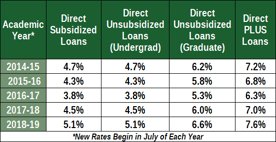

If you’ve been exploring loan options recently, you may have come across several loan terms whose definitions aren’t immediately obvious. This has happened to me — and if you’re like me and find yourself asking questions like, “What is a signature loan?” read on for more information.
Is it possible to borrow money from a reputable financial institution with nothing but your good name? Yes, and it’s called a signature loan. Many lenders offer them, and the money can be used for all kinds of things that you want and need. No collateral is required and once approved, the funds will be at your disposal.
However, as with all credit products, you must understand how they work before applying. Here’s what you need to know about signature loans, from their features to how to manage one correctly.
A Signature Loan is a Type of Unsecured Personal Loan
Signature loans fall under the overarching term of “personal loans.” The funds are not typical for business use but for other expenses you’d like to finance. The most common uses for signature loans include medical procedures, home improvements, car repairs, and consolidating high interest debt.
Unsecured signature loans are granted on good faith, which is your personal guarantee that you will satisfy the debt according to the expectations outlined in the agreement.
The arrangement goes beyond a handshake, though. You have to sign a contract. When you do, you’re legally bound to the terms you’ve accepted, such as the:
- loan amount
- number of months or years you have to repay
- payment amount
- monthly due date
- interest rate
- potential penalties and fees for not paying as agreed
Since signature loans are unsecured, you may wonder if there are also those that are secured. The answer is no, but there are plenty of secured personal loans. You will offer collateral, such as property or money in an investment account, to guarantee the loan. If you fail to pay, the lender can claim the assets.
As opposed to credit cards, which are open-end products (the balance and payment fluctuate with activity, and there is no fixed date for repayment), signature loans are closed-end. That means that payments are set so that you’ll repay the loan by a specific date, and you can’t add to the balance.

Signature student loans, which, as the name suggests, are designed to help college students pay for education expenses are also available to qualifying applicants. They’re unsecured loans backed by the federal government. Unlike federally guaranteed student loans, which are not contingent on an applicant’s credit history, though, the lender will check your credit score to see if you qualify.
If your scores are too low to qualify on your own, you can get a cosigner who has good credit to help. Most programs let the cosigner drop off the contract after you’ve made 24 months of on-time payments.
Where Can I Get a Signature Loan?
Many lenders, including banks, credit unions, and alternative financial institutions offer signature loans. Don’t apply all over town hoping for an approval, however, as it will lower your credit scores with a slew of unnecessary credit inquiries.
The following providers can help you connect with a variety of lenders that offer signature loans that are matched to your credit profile, since they are online marketplaces:
- Short-term loans up to $5,000
- Online marketplace of lenders
- Funds available in as few as 24 hours
- Simple online form takes less than 5 minutes
- Trusted by more than 2 million customers
- See official site, terms, and details.
| Loan Amount | Interest Rate | Loan Term | Loan Example |
|---|---|---|---|
| Up to $5,000 | Varies | Varies | See representative example |
MoneyMutual is a company that helps consumers identify lenders that will work with them for loans of up to $2,500. Once you find a lender and accept the terms, you can have the money from a signature loan on your account in as little as 24 hours. All credit scores are considered, and the income requirement is a minimum of $800 a month.
- Loans from $500 to $10,000
- Get connected with a lender
- Simple form & quick funding
- Get your money as soon as next the business day, if approved
- See official site, terms, and details.
| Loan Amount | Interest Rate | Loan Term | Loan Example |
|---|---|---|---|
| $500 to $10,000 | 5.99% - 35.99% | 3 to 60 Months | See representative example |
BadCreditLoans.com specializes in helping people with lower credit ratings connect with lenders for loans of up to $5,000. Most of the lenders will expect you to be employed (full time, part time, or self) or receive Social Security Income (SSI) or regular Social Security benefits.
- Loans from $500 to $10,000
- Receive a loan decision in minutes
- Get funds directly to your bank account
- Use the loan for any purpose
- See official site, terms, and details.
| Loan Amount | Interest Rate | Loan Term | Loan Example |
|---|---|---|---|
| $500 to $10,000 | 5.99% - 35.99% | 3 to 72 Months | See representative example |
CashUSA.com is another online lending portal with flexible qualification standards for loans of up to $10,000. Credit scores are checked, but everyone is welcome to apply. If you earn or bring in at least $1,000 a month from a reliable source, you should fit the income requirements of some of its lenders.
Sallie Mae is a common provider of student signature loans. Those loan amounts can exceed $100,000.
What is the Interest Rate on a Signature Loan?
All signature loans charge an interest rate and it is extremely important to check what the rate is before agreeing to the loan. You will want the rate to be as low as possible.
In general, the higher your credit scores, the lower the interest rate will be. Signature loans available to people with great credit can offer interest rates in the single digits. In contrast, the rates for bad credit loans can be as high as 35.99%.
The amount you pay in finance fees differs greatly based on the interest rate. For example, if you take out a three-year, $5,000 loan with a 5.99% interest rate, the accumulated interest would be approximately $475.
A loan of the same amount and payment term with a 22% interest rate will cost you about $1,874. That’s a major difference.
What Credit Score is Needed for a Signature Loan?
After you apply, the lender will review your credit score to determine whether you qualify. FICO and VantageScore are the two most common scoring models and they both range from 300 to 850. Experian reports a good FICO credit score is considered to be 670 and above.

The graph shows the credit score ranges for the two main scoring models used by credit bureaus.
If you have high scores, as well as a reliable income that provides you with enough money left over after paying expenses to handle the loan’s payment, you should be eligible for a wide variety of signature loans.
Fewer signature loans are available to people with very low scores — below 600 — but some lenders, such as those mentioned above, do cater to the subprime market.
Can You Get a Signature Loan with Bad Credit?
As with all credit products, the better your credit rating, the easier it will be to qualify, but signature loans are available to people with bad credit. It just means your options will be limited, and the amount you can borrow will be less than if you had a great credit score.
If your credit scores are low, the lender will be looking closely at the amount of money you have coming in on a monthly basis, whether it’s from a job or other guaranteed sources such as SSI benefits. Income types a lender will consider may include:
- Regular paychecks from an employer
- Pension payments
- VA benefits
- Disability payments
- Unemployment compensation
- Alimony
- Seasonal or part-time pay
All sources will need to be documented as taxable income to qualify, and the amount has to be sufficient for you to easily meet the loan payment.
How Does a Signature Loan Compare to a Line of Credit?
When you take out a signature loan, the interest is built into the payments, so a portion of what you pay will go toward financing. You will always know how much you have to pay each month, too, since the payments are fixed.
You can always pay more but never less. The balance will decline over time (terms usually range from 12 months to five years) and eventually it will be satisfied.
On the other hand, a line of credit is a product where you draw from an amount that the lender makes available to you. If you don’t use the money, no interest will be charged.
When you do borrow from the line of credit, interest will start to accrue and you’ll have to make at least the minimum payments. These lines of credit have draw periods, which is the length of time you can tap into the funds. When that draw period ends, you have to pay the loan back within a fixed time-frame.
Compare Loan Offers Before Agreeing to the Terms
Be sure to review multiple signature loan offers before making your final decision. The terms need to be right for you. Outside of the lowest possible interest rate, the monthly payment shouldn’t cause any financial stress. That means examining your budget to ensure you have enough cash left over every month to easily send the payment.
In addition to the benefit of paying for something over time, when you take out a signature loan and manage it correctly, your credit scores should increase. All you have to do is send your payments by the due date — on-time payments account for 35% of your FICO Score. After the loan is zeroed out, your credit report will indicate that you can handle this type of credit product perfectly — which is what all lenders want to see.
Advertiser Disclosure
BadCredit.org is a free online resource that offers valuable content and comparison services to users. To keep this resource 100% free for users, we receive advertising compensation from the financial products listed on this page. Along with key review factors, this compensation may impact how and where products appear on the page (including, for example, the order in which they appear). BadCredit.org does not include listings for all financial products.
Our Editorial Review Policy
Our site is committed to publishing independent, accurate content guided by strict editorial guidelines. Before articles and reviews are published on our site, they undergo a thorough review process performed by a team of independent editors and subject-matter experts to ensure the content’s accuracy, timeliness, and impartiality. Our editorial team is separate and independent of our site’s advertisers, and the opinions they express on our site are their own. To read more about our team members and their editorial backgrounds, please visit our site’s About page.







